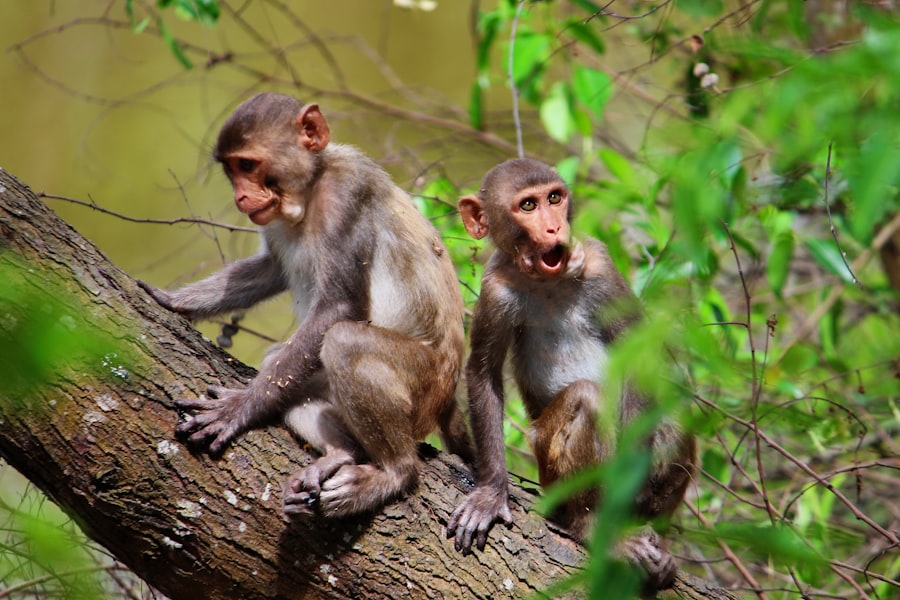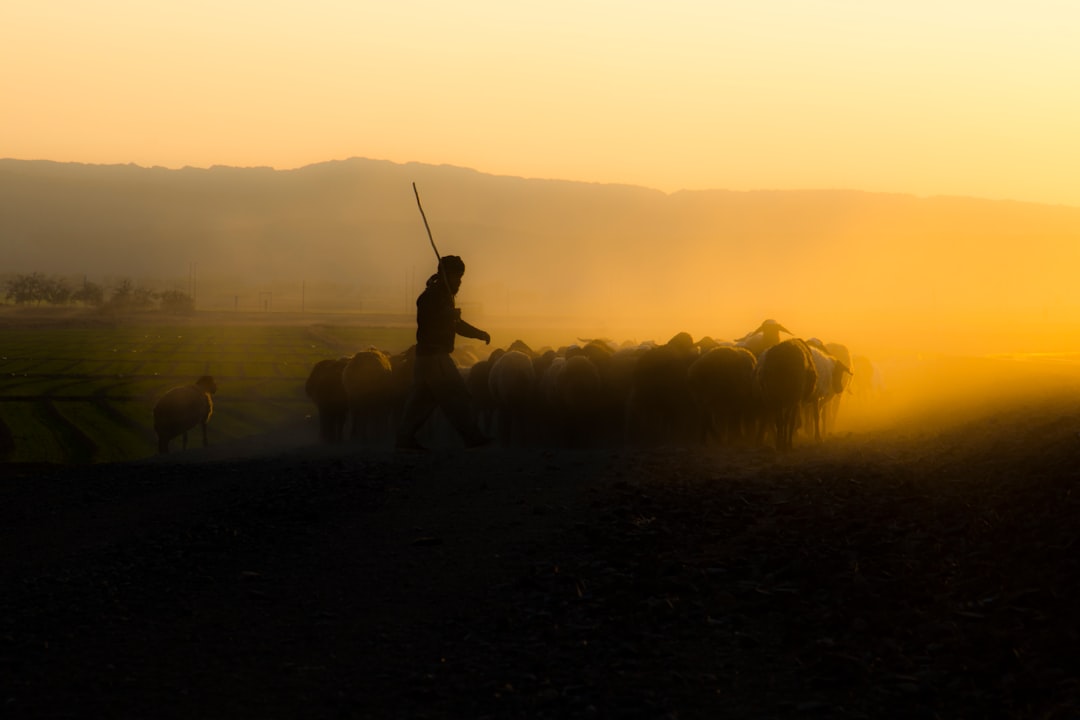The origins of animal life on Earth trace back to a time when the planet was a vastly different place, characterized by primordial oceans and a lack of complex organisms. Scientists believe that the first animals emerged around 600 million years ago during the Ediacaran period. These early life forms were simple, multicellular organisms that likely resembled modern-day sponges or jellyfish.
Fossils from this era reveal a diverse array of shapes and sizes, suggesting that the foundations of animal life were being laid in the depths of the oceans. The emergence of these primitive creatures marked a significant turning point in the history of life, setting the stage for the complex ecosystems that would follow. As time progressed, the Cambrian explosion around 541 million years ago heralded a remarkable diversification of life forms.
This period saw the rapid evolution of many major groups of animals, including arthropods, mollusks, and early vertebrates. The fossil record from this time is rich with evidence of intricate body plans and adaptations, indicating that natural selection was driving innovation at an unprecedented pace. The development of hard shells and exoskeletons provided protection and allowed for greater mobility, leading to an explosion of species that would dominate the oceans for millions of years.
This evolutionary leap not only laid the groundwork for future terrestrial life but also established complex food webs that would shape marine ecosystems.
Key Takeaways
- Animal life originated billions of years ago, evolving from single-celled organisms to the diverse array of species we see today.
- Prehistoric animals and dinosaurs roamed the Earth for millions of years, leaving behind fossils that provide valuable insights into the past.
- Mammals have evolved over time, adapting to various environments and developing unique characteristics for survival.
- The age of reptiles saw the dominance of dinosaurs and other reptilian species, shaping the ecosystems of the time.
- Birds rose to prominence, developing diverse adaptations for flight and becoming integral parts of ecosystems around the world.
- Marine life is incredibly diverse, with a wide range of species inhabiting oceans, from microscopic organisms to massive whales.
- Human impact on animal populations has led to habitat destruction, pollution, and overexploitation, threatening many species with extinction.
- Endangered species conservation efforts are crucial for protecting vulnerable animals and preserving biodiversity for future generations.
- Animals display intelligence and complex communication systems, challenging traditional notions of human superiority.
- Animals play important roles in human culture and society, serving as symbols, companions, and sources of inspiration.
- The future of animal life depends on conservation efforts, sustainable practices, and global cooperation to protect and preserve diverse species and their habitats.
Prehistoric Animals and Dinosaurs
The prehistoric era was marked by the dominance of various animal groups, most notably the dinosaurs, which roamed the Earth for over 160 million years. These magnificent creatures emerged during the Triassic period, evolving from earlier archosaurian reptiles. Dinosaurs were incredibly diverse, ranging from the towering Brachiosaurus to the swift Velociraptor, showcasing a wide array of adaptations that allowed them to thrive in different environments.
Their success can be attributed to several factors, including their ability to regulate body temperature and their varied diets, which included both plants and other animals. The Mesozoic era, often referred to as the “Age of Dinosaurs,” was characterized by a rich tapestry of life. During this time, dinosaurs evolved into numerous forms, filling ecological niches that had previously been unoccupied.
Some species developed unique features such as feathers, which may have played a role in thermoregulation or mating displays. The fossil record provides glimpses into their behavior and social structures, revealing that some dinosaurs lived in herds while others were solitary hunters. However, this era came to a dramatic end approximately 66 million years ago with a mass extinction event likely triggered by an asteroid impact.
This cataclysmic event paved the way for new forms of life to emerge and flourish in the aftermath.
The Evolution of Mammals

Following the extinction of the dinosaurs, mammals began to rise in prominence during the Cenozoic era. Initially small and nocturnal, these early mammals were overshadowed by their reptilian counterparts. However, as ecosystems transformed and new niches became available, mammals underwent significant evolutionary changes.
The development of traits such as warm-bloodedness and fur allowed them to adapt to various climates and habitats.
The evolution of mammals is marked by several key adaptations that contributed to their success.
One notable development was the emergence of live birth in many species, which provided offspring with a greater chance of survival compared to those laid as eggs. Additionally, the evolution of complex brains facilitated advanced behaviors and social structures among mammals. This cognitive leap allowed for intricate communication methods and problem-solving abilities, setting mammals apart from other animal groups.
As they continued to evolve, mammals filled ecological roles left vacant by the dinosaurs, leading to the rise of familiar groups such as primates, carnivores, and ungulates.
The Age of Reptiles
| Species | Period | Length | Weight |
|---|---|---|---|
| Tyrannosaurus Rex | Late Cretaceous | 40 feet | 9 tons |
| Stegosaurus | Late Jurassic | 30 feet | 6 tons |
| Triceratops | Late Cretaceous | 26 feet | 12 tons |
While mammals were quietly evolving in the shadows after the dinosaurs’ extinction, reptiles continued to thrive in various forms. The Age of Reptiles did not end with the demise of dinosaurs; rather, it transformed into a new chapter where reptiles adapted to fill ecological niches across land and sea. This period saw the rise of various reptilian groups, including crocodilians, lizards, and snakes, each exhibiting unique adaptations that allowed them to survive in diverse environments.
Reptiles are characterized by their scaly skin and ability to lay eggs on land, which has enabled them to colonize a wide range of habitats. Some reptiles evolved remarkable adaptations for survival; for instance, certain species developed venomous fangs for hunting while others became adept at camouflage to evade predators. The resilience of reptiles is evident in their continued existence today, as they have successfully navigated through millions of years of environmental changes and mass extinctions.
Their evolutionary journey showcases not only their adaptability but also their integral role in maintaining ecological balance.
The Rise of Birds
Birds represent one of the most fascinating success stories in the history of animal evolution. Emerging from theropod dinosaurs during the late Jurassic period, birds developed unique adaptations that allowed them to conquer the skies. The evolution of feathers was a pivotal moment in this transition; initially serving for insulation or display, feathers eventually enabled flight.
This newfound ability opened up vast opportunities for exploration and resource acquisition. The diversification of birds is remarkable; they have adapted to nearly every habitat on Earth, from dense forests to arid deserts and even polar regions. Their beaks have evolved into various shapes and sizes tailored for specific diets, while their migratory behaviors demonstrate incredible navigational skills.
Birds also exhibit complex social structures and communication methods, often using songs and calls to convey information about territory or mating readiness. As descendants of dinosaurs, birds serve as a living testament to the resilience and adaptability of life on Earth.
The Diversity of Marine Life

The oceans are home to an astonishing diversity of life forms that have evolved over billions of years. From microscopic plankton to massive whales, marine ecosystems are teeming with organisms that play vital roles in maintaining ecological balance. Coral reefs, often referred to as the “rainforests of the sea,” are among the most biodiverse ecosystems on the planet.
They provide habitat for countless species and serve as crucial breeding grounds for many fish. Marine life has adapted to various environmental conditions, leading to unique evolutionary paths. For instance, deep-sea creatures have developed bioluminescence as a means of communication or predation in the dark depths of the ocean.
Similarly, some species have evolved specialized feeding mechanisms to exploit specific food sources available in their habitats. The interconnectedness of marine life is evident in food webs that illustrate how energy flows through ecosystems, highlighting the importance of each species in sustaining overall health.
The Impact of Humans on Animal Populations
Human activity has had profound effects on animal populations across the globe. From habitat destruction due to urbanization and agriculture to pollution and climate change, many species face unprecedented challenges that threaten their survival. Deforestation has led to significant loss of biodiversity as countless animals lose their natural habitats.
Additionally, overfishing has decimated fish populations and disrupted marine ecosystems. The impact extends beyond direct threats; human-induced climate change alters habitats and migratory patterns for many species. As temperatures rise and weather patterns shift, animals must adapt or face extinction.
The introduction of invasive species by humans has further complicated these dynamics, often leading to declines in native populations unable to compete with newcomers. Recognizing these challenges is crucial for developing effective conservation strategies aimed at preserving biodiversity for future generations.
Endangered Species and Conservation Efforts
The plight of endangered species has garnered increasing attention in recent decades as awareness grows regarding biodiversity loss. Many species are on the brink of extinction due to habitat loss, poaching, climate change, and other human-related factors. Iconic animals such as tigers, elephants, and rhinoceroses face dire threats from illegal wildlife trade and habitat encroachment.
Conservation efforts have emerged as a response to these challenges, aiming to protect endangered species and their habitats through various strategies. Protected areas such as national parks and wildlife reserves provide safe havens for vulnerable populations while promoting sustainable practices within surrounding communities. Additionally, international agreements like CITES (the Convention on International Trade in Endangered Species) seek to regulate trade in endangered animals and plants globally.
Public awareness campaigns also play a vital role in fostering support for conservation initiatives by educating individuals about the importance of preserving biodiversity.
Animal Intelligence and Communication
Animal intelligence is a captivating area of study that reveals remarkable cognitive abilities across various species. From problem-solving skills exhibited by crows to complex social structures observed in elephants and dolphins, intelligence manifests in diverse ways throughout the animal kingdom. Research has shown that many animals possess advanced memory capabilities, allowing them to navigate their environments effectively or remember social relationships within their groups.
Communication among animals is equally fascinating; it encompasses vocalizations, body language, and even chemical signals used by insects or pheromones released by mammals. For instance, bees perform intricate dances to convey information about food sources to their hive mates while wolves use vocalizations and scent marking to establish territory and communicate with pack members. Understanding these forms of communication not only enhances knowledge about animal behavior but also highlights the intricate connections between species within ecosystems.
The Role of Animals in Human Culture and Society
Animals have played an integral role in human culture throughout history, influencing art, mythology, religion, and daily life. From ancient civilizations that revered animals as symbols of power or divinity to modern societies that rely on domesticated animals for companionship or labor, this relationship has shaped human experiences across cultures worldwide. In addition to practical roles such as providing food or transportation, animals have inspired countless works of art and literature reflecting humanity’s fascination with them.
From cave paintings depicting hunting scenes to contemporary films featuring anthropomorphic characters, animals continue to captivate human imagination. Furthermore, studies have shown that interactions with animals can have therapeutic benefits for individuals facing mental health challenges or social isolation—underscoring their significance beyond mere companionship.
The Future of Animal Life
The future of animal life on Earth hangs in a delicate balance influenced by human actions and environmental changes. As biodiversity continues to decline due to habitat loss and climate change impacts become more pronounced, urgent action is needed to safeguard vulnerable species and ecosystems. Conservation efforts must evolve alongside scientific advancements; innovative approaches such as wildlife corridors or rewilding initiatives aim to restore habitats while promoting genetic diversity among populations.
Moreover, fostering a deeper understanding between humans and animals is essential for creating sustainable coexistence strategies moving forward. Education plays a pivotal role in cultivating empathy towards wildlife while encouraging responsible stewardship practices within communities worldwide. By prioritizing conservation efforts alongside sustainable development goals—such as reducing carbon footprints or promoting ethical consumption—society can work towards ensuring a future where both humans and animals thrive together harmoniously on this planet.
From its origins in ancient oceans to its current state amidst human influence, each chapter reveals intricate connections between species and ecosystems that underscore our shared responsibility for preserving biodiversity for generations yet unborn.
If you’re fascinated by the intricate stories and evolutionary journeys of animals as depicted in the “Full History Documentary: Animals,” you might find the article on Hey Did You Know This equally captivating. This article delves into lesser-known facts and intriguing insights about the animal kingdom, offering a perfect complement to the documentary’s comprehensive exploration. For more fascinating tidbits and in-depth analysis, be sure to check out the related article on their website by following this link.
WATCH THIS! The CIA’s Spy Cat and 3 Other Secret Animal Weapons That Almost Won the Cold War
FAQs
What is a full history documentary about animals?
A full history documentary about animals is a film or video production that explores the history, behavior, and evolution of various animal species. It typically includes footage of animals in their natural habitats, as well as interviews with experts and scientists.
What are the benefits of watching a full history documentary about animals?
Watching a full history documentary about animals can provide valuable educational information about different species, their habitats, and their interactions with the environment. It can also raise awareness about conservation efforts and the importance of protecting wildlife.
Where can I find full history documentaries about animals?
Full history documentaries about animals can be found on streaming platforms, such as Netflix, Amazon Prime, and Disney+, as well as on television channels dedicated to nature and wildlife programming. They may also be available for purchase or rental on DVD or Blu-ray.
Are full history documentaries about animals suitable for all ages?
Many full history documentaries about animals are suitable for all ages, as they are often designed to be educational and family-friendly. However, some documentaries may contain content that is more suitable for older audiences, such as scenes of animal predation or mating behavior.
What are some popular full history documentaries about animals?
Some popular full history documentaries about animals include “Planet Earth,” “Blue Planet,” “Our Planet,” “Life,” and “The Hunt.” These documentaries are known for their stunning cinematography and in-depth exploration of various animal species and their habitats.
